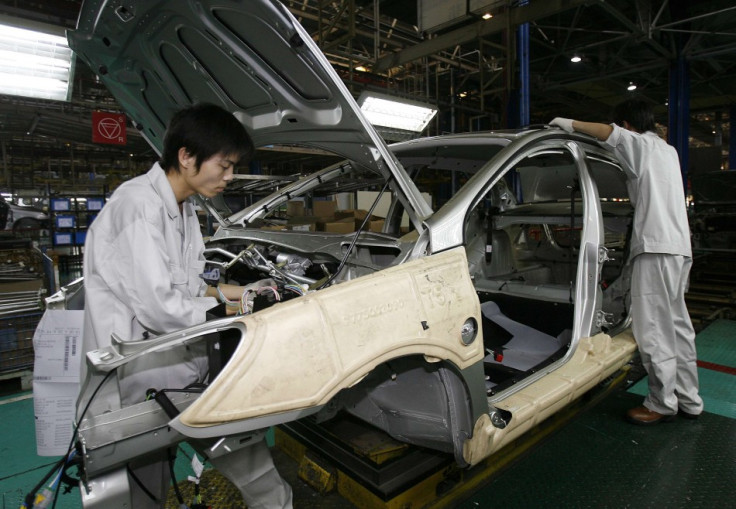China Economic Growth Accelerates on 'Mini Stimulus'

China recovered from a growth slowdown in the third quarter, thanks to the country's "mini stimulus" that fuelled domestic demand to increase industrial production.
The National Bureau of Statistics said China's gross domestic product (GDP) rose 7.8% year-on-year in the third quarter, up from 7.5% in the second quarter. The quarterly growth rate was the fastest in the current fiscal year and was in line with analysts' estimates.
Factory output in the three months ended September rose 10.1% from a year earlier, 1 percentage point higher than the growth rate in the first half of the year. Factory output in September rose 10.2% from a year earlier, down from August's annual pace of 10.4%.
Among other data released on 18 October, retail sales rose 13.3% in September from a year earlier, slightly below expectations for an increase of 13.5% and a 13.4% gain in the previous month.
Fixed asset investment rose 20.2% year over year in the first nine months of 2013, lower than analysts' expectations for a rise of 20.3%.
"While exports slowed significantly in September, which dragged on growth somewhat, overall economic conditions remain benign, supported by investment growth and led by property investment," said analysts at ANZ Research.
Investment contributed 4.3 percentage points to GDP growth in the first three quarters of 2013. Housing investment accounts for about 25% of China's total fixed asset investment.
China on Track to Achieve Full-Year Growth Target
China is currently the world's fastest-growing major economy with annual gross domestic product growth rates averaging 10% for the last 30 years.
However, the global economic crisis did also impact China, following its growing ties with the international markets.
Economic growth has slowed down in 11 of 14 previous quarters. In the fiscal year 2012, the country's economy grew by just 7.7% in 2012, the slowest pace in 13 years.
The economy grew 7.5% in the second quarter compared with a year earlier, slowing from 7.7% in the first three months of 2013.
Despite the lag, China's authorities were reluctant to announce big stimulus measures, but took steps to boost domestic demand.
The measures include lower taxes on small companies and more railway development. In August, China suspended value-added tax and the turnover tax for businesses generating monthly sales below 20,000 yuan ($3,257, £2,125, €2,512).
Officials also said the country would help medium-sized private enterprises with measures including simplifying customs clearance procedures, reducing operational fees and facilitating exports.
With the help of the stimulus measures, China rebounded with robust economic data, especially in the manufacturing and services sectors, for the third quarter.
China's central bank has suggested that the economy is stabilising after forecasting that the growth rate will exceed the official target of 7.5% for the fiscal year 2013.
"As the economy warmed up in Q3, we believe that China will deliver the growth target of 7.5% this year, and maintain our forecast that the Chinese economy will grow 7.6% for the whole year," ANZ economists added.
Downside Risks Remain
Meanwhile, many analysts opine that China's economic recovery is fragile due to weakening exports.
China's exports dropped 0.3% in September from a year earlier due to lower sales to Southeast Asia. Sales to the region rose 10% in September, a 17-month low, compared to a 31% growth in the previous month.
Rising inflation and fears about the Fed stimulus cut are also expected to limit the country's room for further stimulus.
"As inflationary pressure has picked up, the central bank is unlikely to change the tightening bias in the monetary policy for the remainder of the year," said ANZ economists.
"The RMB is still under pressure to appreciate in the short term due to strong capital inflows amid delayed QE tapering. However, an overly-strong RMB is inconsistent with macroeconomic fundamentals."
© Copyright IBTimes 2025. All rights reserved.






















